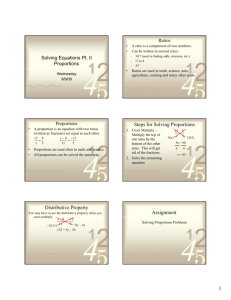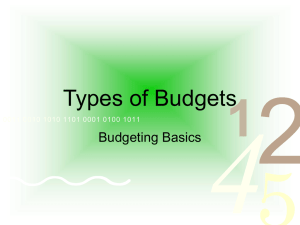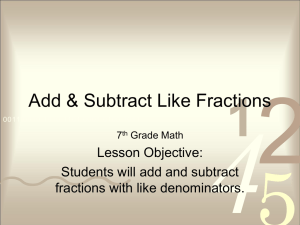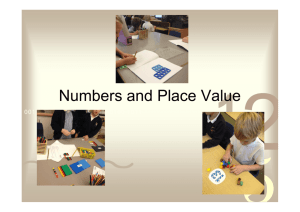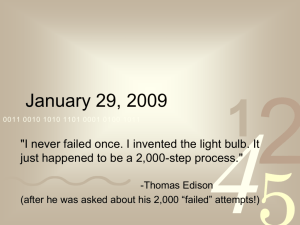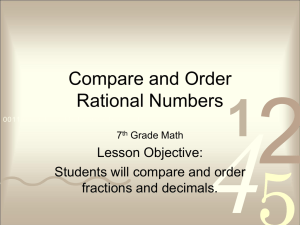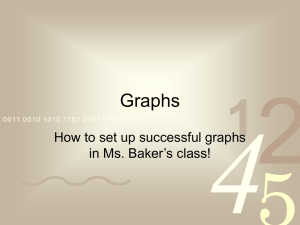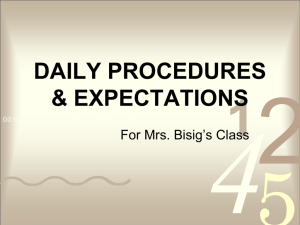Business Model
advertisement
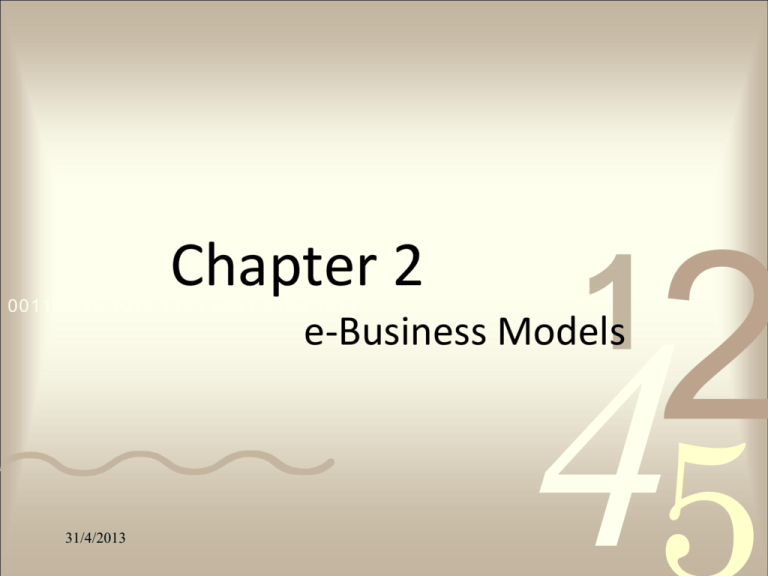
Chapter 2 0011 0010 1010 1101 0001 0100 1011 1 e-Business Models 31/4/2013 2 4 Learning outcomes • Describe an e-Business model and its importance • Describe e-Business relationship models • Describe e-Business marketplace communications and trading • Suggest the right e-Business model to use • Identify the tools that make e-Business work. 0011 0010 1010 1101 0001 0100 1011 1 31/4/2013 2 4 Examples- How this company makes money? 0011 0010 1010 1101 0001 0100 1011 1 31/4/2013 2 4 Examples- How this company makes money? 0011 0010 1010 1101 0001 0100 1011 1 31/4/2013 2 4 Examples- How this company makes money? 0011 0010 1010 1101 0001 0100 1011 1 31/4/2013 2 4 Examples- How this company makes money? 0011 0010 1010 1101 0001 0100 1011 1 31/4/2013 2 4 What is a business model? Timmers (1999) defines a ‘business model’ as: 0011 0010 1010 1101 0001 0100 1011 An architecture for product, service and information flows, including a description of the various business actors and their roles; and a description of the potential benefits for the various business actors; and a description of the sources of revenue. 31/4/2013 1 2 4 What is a business model? 0011 0010 1010 1101 0001 0100 1011 • In a conventional business method, a business model can also be described as, 1 2 “a method for enterprises to offer their products and services to customers and to sustain their competitive advantage for a long term” (Gottschalk, 2006). 31/4/2013 4 What is an ebusiness model? 0011 0010 1101 0001 1011 • A1010 definition by 0100 Mc Gann and Lyytinen (2002) describes e-Business model as, “an integration of business rules, a viable trading mechanism, and associated trading protocols into a business approach that leverage the open network (Internet) as its medium of transaction”. 31/4/2013 1 2 4 What is an e-business model? 0011 0010 1010 1101 0001 0100 1011 • Another definition: 2 “a description of roles and relationships among a firm’s consumers, customers, allies and suppliers that identifies the major flows of product, information, money and the major benefits to the participants” (Weill and Vitale, 2001). 1 31/4/2013 4 e-Business Model 0011 0010 1010 1101 0001 0100 1011 • Each enterprise that use the Internet should have an e-Business model-> how it plan to make money for a long term using the Internet. 1 Internet + non Internet activities 31/4/2013 Planned or evolving 2 4 Making money $$$$ and keep the money coming Components of e-Business Model 0011 0010 1010 1101 0001 0100 1011 Business Model • customer value Internet • scope • price • revenue sources • connected activities • implementation • capabilities • sustainability Environment 31/4/2013 1 2 Performance 4 Components of e-Business Model • Customer value – What is customer value? 0011 0010 1010 1101 0001 0100 1011 – Differentiation • • • • • • • Product features Timing Location Service Product mix Linkages Brand name reputation – Low cost 31/4/2013 1 2 4 Components of e-Business Model • Scope 0011 0010 1010 1101 0001 0100 1011 – Market segment /geographic area • Businesses – Different industries – Sizes – Technical sophistication • Household – Demographic – Lifestyle – Incomes 1 2 4 – Example: an e-Business company that targets teenagers must decide how much of their customers’ needs it wants to meet. 31/4/2013 Components of e-Business Model 0011 0010 1010 1101 0001 0100 1011 • Price – Require good pricing strategy • Dynamic pricing – Menu/ fixed pricing – One-to-one bargaining – Auction – Reverse auction – Barter 31/4/2013 1 2 4 Components of e-Business Model 0011 0010 1010 1101 0001 0100 1011 • Revenue sources – Determine the source of revenue • Commission • Interest • The spread between the bid and the price of stocks • Connected activities- what and when 1 2 – What • Activities to perform must be consistent with customer value and scope • Reinforce each other • Gain advantage from industry success drivers • Gain advantage from any distinctive advantages • Gear towards building the image – When • Market situation • Competitors doing • Customers demand 31/4/2013 4 Criteria To Determine An Ebusiness Model 0011 0010 1010 1101 0001 0100 1011 • A few criteria to determine an e-Business model (Weill and Vitale, 2001) such as : – Involved parties – business to business, business to customer or customer to customer. – Revenue sources – transaction fee, product price, and/or exposure fee. – Value configuration – value chain, value shop and/or value network. – Integration with customers or suppliers. – Relationships – one to one, one to many, and many to many and/or many to one. – Knowledge – know-how, know-what and know-why 1 31/4/2013 2 4 Types of e-Business Model (source: Weile & Vitale, 2001) models 0011 0010E-Business 1010 1101 0001 0100 1011 Description Direct to customer •The buyer and seller is communicating directly • The seller act as a retailer, wholesaler or a manufacturer. • The customer can be an individual or a business. • Emphasizes on application infrastructure, communication and IT management. • Example: Dell Computer Corporation, selling a custom made products direct to the customers (see www.dell.com). Full service provider • Allows an enterprise to provide total coverage of customer’s needs in a particular domain. • Example, the customer seeks for advice on health care services thus it will add value to the enterprise by offering a full range of services and consolidate them into the customer chosen channel. Example: Prudential Advisor Whole of enterprise •Provides customers a single point of contact to the enterprise by provision of goods and services through business units. • Commonly used by the public-sector organizations. •Example: Myeg.com.my, represents government agencies such as ‘Jabatan Pengangkutan Jalanraya (JPJ)’ that provides various services for the public (see www.myeg.com.my). 31/4/2013 1 2 4 Types of e-Business Model E-Business models Description 0011 0010 1010 1101 0001• Used 0100 1011 Intermediaries in portals, agents, auctions and other intermediaries. • The intermediaries are represented by websites . • Example, a travel agency can be an intermediary for the airlines company, hotels and other accommodations required by customers. For customers, the intermediary website is a one stop centre that provide all the necessary services that can ease their tasks – www.agoda.com 1 2 Shared infrastructure- • The enterprise will provide an IT infrastructure to be shared among its owners. • It allows the customers to access the shared infrastructure for selecting and viewing the suppliers and their value propositions. • The chosen supplier will complete the transaction by providing the products or services to the customers. Example: Yahoo.com provides an infrastructure for services and products placement (see www.yahoo.com). Virtual community • The enterprise who owns or sponsors the virtual community will be a moderator that manages the members of the community. •Depends on available members, system’s privacy and security and leveraging the members profile information for marketing purposes, etc. Example: Facebook 31/4/2013 4 Types of e-Business Model 0011 0010 1010 1101 0001 0100 1011 E-Business models Description Value net integrator • Adds value by improving the effectiveness of virtual value chain through gathering, synthesizing and distributing of information to all the players in the model. • Example: Cisco System provides various software and hardware for other businesses (see www.cisco.com) Content provider • Creates and provides content such as information, products, or services in digital format to customers via third parties. •Digital products can be software, music, video or movie and etc. • Example: Gua.com, a website that allow customers to watch movie online (see www.gua.com.my, tonton.com.my) and Amazon.com that provides book reviews (see www.amazon.com) 31/4/2013 1 2 4 Activity in class Find out these companies e-business models, and suggest 5 more companies of your choice. 0011 0010 1010 1101 0001 0100 1011 Company E-Business Model Jobstreet.com Amazon.com Youtube.com Google.com Tonton.com Thestar.com.my Ebay.com 31/4/2013 1 2 4 Example : 0011 0010 1010 1101 0001 0100 1011 1 Figure 2.10 2 4 Alternative perspectives on e-business models (source: Chaffey, 2007) 31/4/2013 Example: Book publisher 0011 0010 1010 1101 0001 0100 1011 Subscription fee Pay-per-view access 1 CPM on site 2 Affiliate revenue (CPA/CPC) Publisher CPC advertising 31/4/2013 Sponsorship 4 Subscriber for email marketing Access to customers Another Example 0011 0010 1010 1101 0001 0100 1011 1 2 4 Figure 2.11 Alex Tew’s Million Dollar Home Page (www.milliondollarhomepage.com) : (source: Chaffey, 2007) 31/4/2013 Business Relationship Models 0011 0010 1010 1101 0001 0100 1011 1 2 4 Figure 1.2 Summary and examples of transaction alternatives between businesses, consumers and governmental organizations (source: Chaffey, 2007) 31/4/2013 BUSINESS RELATIONSHIP MODELS 0011 0010 1010 1101 0001 0100 1011 1 2 4 Figure 2.2 B2B and B2C interactions between an organization, its suppliers and its customers (source: Chaffey, 2007) 31/4/2013 B2B and B2C characteristics 0011Characteristic 0010 1010 1101 0001 0100 B2C 1011 B2B Proportion of adopters with access Low to medium High to very high Complexity of buying decisions Relatively simple – individual and influencers More complex – buying process involves users, specifiers, buyers, etc. Channel Relatively simple – direct or from retailer More complex, direct or via wholesaler, agent or distributor Purchasing characteristics Low value, high volume or high value, low volume. May be high involvement Similar volume/value. May be high Involvement. Repeat orders (rebuys) more common Product characteristic Often standardized items Standardized items or bespoke for sale 31/4/2013 1 2 4 E-MARKETPLACE 0011 0010 1010 1101 0001 0100 1011 1 Figure 2.8 2 4 Variations in the location and scale of trading on e-commerce sites 31/4/2013 Marketplace Channel Structures 0011 0010 1010 1101 0001 0100 1011 1 2 4 Disintermediation of a consumer distribution channel showing (a) the original situation, (b) disintermediation omitting the wholesaler, and (c) disintermediation omitting both wholesaler and retailer Figure 2.3 31/4/2013 Marketplace Channel Structures 0011 0010 1010 1101 0001 0100 1011 • Describes the way a manufacturer delivers products and services to its customers 1 4 From original situation (a) to disintermediation (b) and reintermediation (c) Figure 2.4 31/4/2013 2 Online Intermediaries: Examples • Directories 0011 0010 1010 1101 0001 0100 1011 • Search Engines • Malls • Virtual resellers • Financial Intermediaries • Forums, fan clubs and user groups Customer • Evaluators 1 4 Customer Company Intermediary Customer 31/4/2013 2 ONLINE INTERMEDIARIES- EXAMPLE 0011 0010 1010 1101 0001 0100 1011 1 4 Yahoo! Shopping Australia, a price comparison site based on the Kelkoo.com shopping comparison technology (http://shopping.yahoo.com.au) Figure 2.6 31/4/2013 2 Disintermediation • The removal of intermediaries such as distributors or brokers that formerly linked a company to its customers. 0011 0010 1010 1101 0001 0100 1011 1 Customer Company Customer 31/4/2013 Customer 2 4 Customer Reintermediation • Creation of a new intermediary • Example: – B&Q www.diy.com – Opodo www.opodo.com – Boots www.wellbeing.com www.handbag.com – Ford, Daimler (www.covisint.com) • Partnering with existing intermediary – Mortgage broker Charcol and Freeserve 0011 0010 1010 1101 0001 0100 1011 1 31/4/2013 2 4 Reintermediation: Example 0011 0010 1010 1101 0001 0100 1011 1 31/4/2013 2 4 Multi-channel Marketplace Models 0011 0010 1010 1101 0001 0100 1011 • Customer journey – modern multi-channel behavior as consumers use different media – Offline – Mixed-mode – Online 31/4/2013 1 2 4 Multi-channel Marketplace Models 0011 0010 1010 1101 0001 0100 1011 1 2 4 Example channel chain map for consumers selecting an estate agent to sell their property Figure 2.7 31/4/2013 0011 0010 1010 1101 0001 0100 1011 1 Figure 2.5 Dave Chaffey’s blog site (www.davechaffey.com) 31/4/2013 2 4 E-Business Tools • Blogs 0011 0010 1010 1101 0001 0100 1011 – Give an easy method of regularly publishing web pages, e.g. online journals, diaries or event listing – Include feedback or comments • Portal 1 – ‘A gateway to information resources and services’ • • • • Social network applications Forum/bulletin Search engine Etc. 31/4/2013 2 4 Summary 0011 0010 1010 1101 0001 0100 1011 • E-Business model will determine how the company should make profits. • It will describe the marketplace and strategy required. • Various type of models and a combination of a few models can be seen in the online market. 1 31/4/2013 2 4 References 0011 0010 1010 1101 0001 0100 1011 • • • • • • Chaffey, D. (2007), E-Business and E-Commerce Management. Financial Times, Prentice Hall, London Owen, J.D. (2006). Electronic-Business: A business model can make a difference. Management Services, Spring, 24-28. Weill, P. and Vitale, M.R. (2001). Place to Space, migrating to e-business models. Boston: Harvard Business School Press. Gottchalk, P. (2006). E-Business Strategy, Sourcing and Governance. IGP: London. McGann, S.T. and Lyytinen, K. (2002). Capturing the Dynamic of eBusiness Models: The eBusiness Analysis Framework and the Electronic Trading Infrastructure. Proceedings of the 15th Bled Electronic Commerce Conference- eReality: Constructing the eEconomy, Bled, Slovenia, pp.36-53. Linkedin Slide share presentation on Business models 31/4/2013 1 2 4
